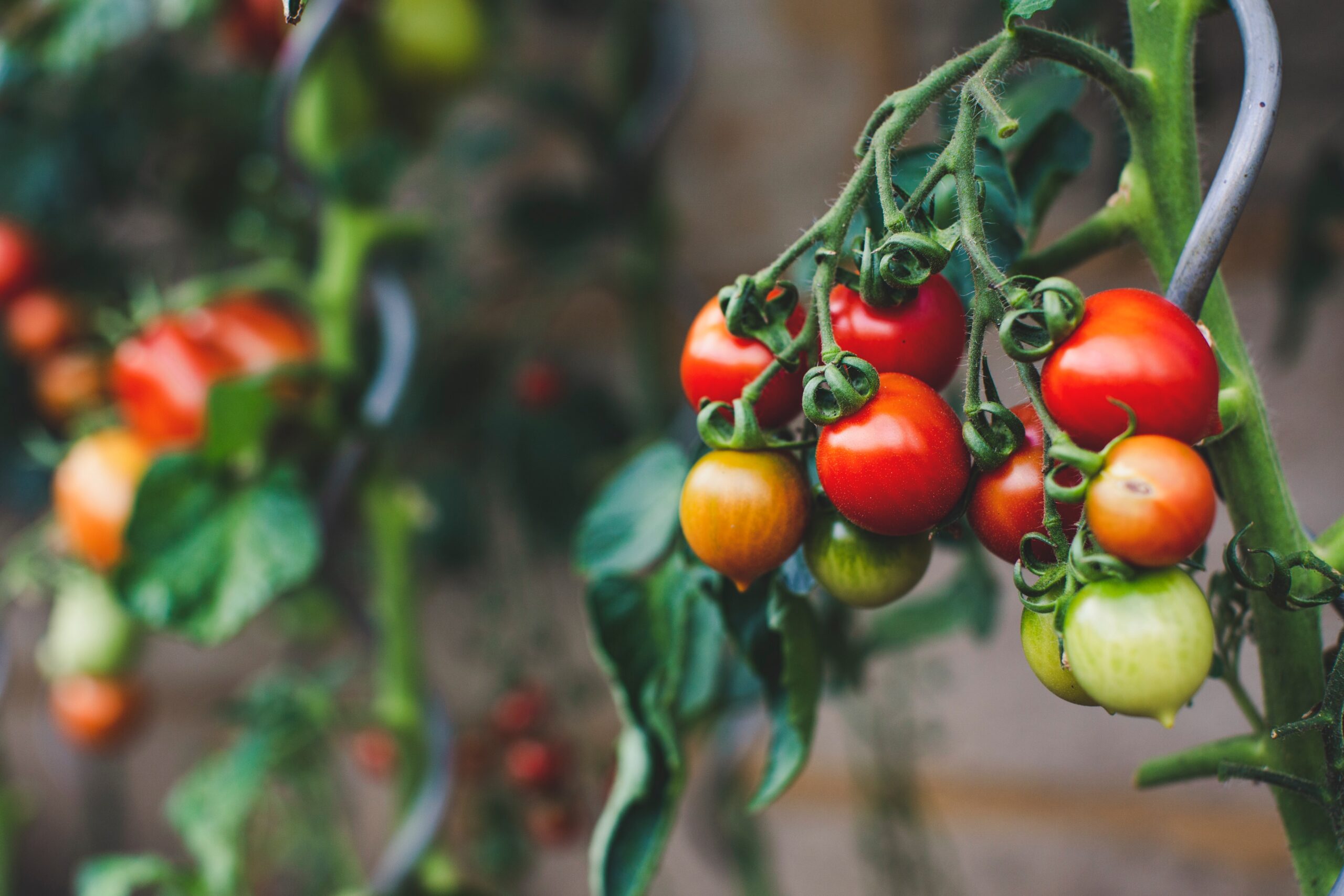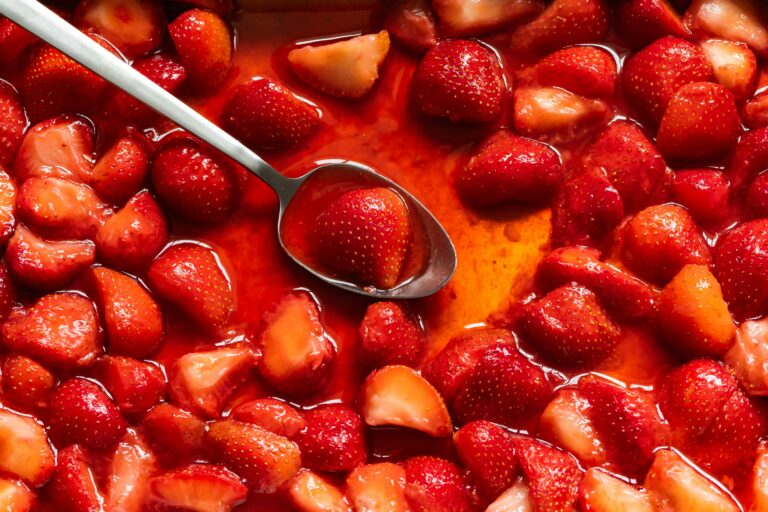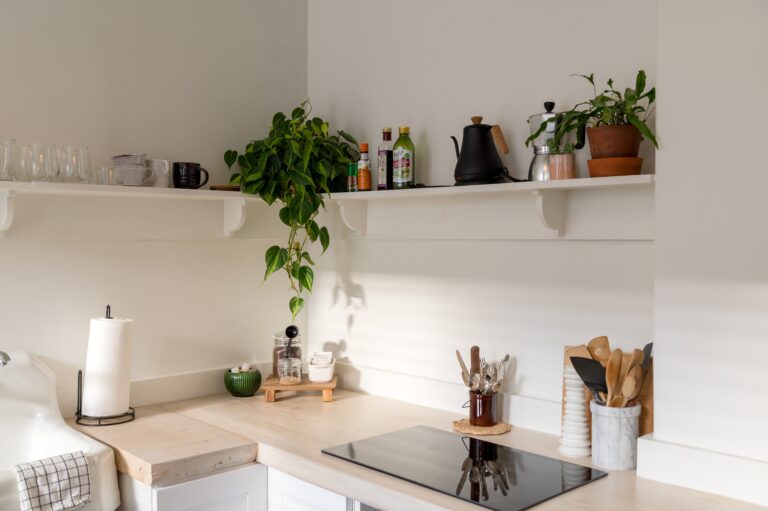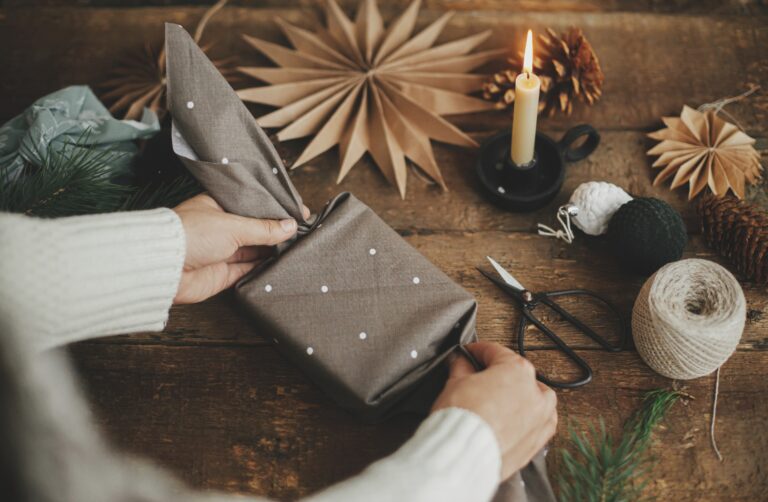Green Thumb 101: Learn How to Grow Tomatoes in Any Part of the World
Are you dreaming of fresh tomatoes from your own garden? Growing tomatoes can be a rewarding experience, no matter where you are in the world! In this Green Thumb 101 post, we’ll explore how to grow tomatoes in any part of the world, from temperate climates to tropical areas. We’ll discuss the different techniques needed to successfully grow tomatoes in various climates and help you get started with your own tomato garden!

Understanding the basics of tomato growth
Tomatoes are one of the most popular vegetables (or technically, fruits) to grow in home gardens. Understanding the basics of tomato growth is essential for ensuring a successful and bountiful harvest.
Tomato plants belong to the nightshade (Solanaceae) family, which also includes peppers, potatoes, and eggplants. They are warm-season plants that thrive in temperatures between 70°F and 90°F (21°C and 32°C). When starting tomatoes from seed, it’s important to provide them with a warm and controlled environment, such as a greenhouse or indoors, until the weather outside is suitable for planting.
Sunlight: Tomato plants require full sun to produce an abundant harvest. They need at least 6-8 hours of direct sunlight per day to thrive. When choosing a spot in your garden, look for an area with good air circulation and well-draining soil. Tomatoes are susceptible to fungal diseases, so it’s important to provide them with adequate airflow to prevent moisture buildup.
Soil: The success of tomato growth also depends on the right soil conditions. Tomatoes prefer slightly acidic soil with a pH between 6.0 and 7.0. The soil should be rich in organic matter, well-draining, and fertile. Adding compost or aged manure before planting will help improve soil structure and nutrient content.
When planting tomato seedlings or transplants, make sure to space them at least 2-3 feet apart to allow for proper airflow and reduce the risk of disease spread. Providing support for tomato plants, such as stakes or cages, is also crucial to prevent sprawling and increase fruit production.
Regular watering is essential for tomato plants, especially during the fruiting stage. However, avoid overwatering as it can lead to root rot and other diseases. Water deeply and consistently, aiming for about 1-1.5 inches of water per week.
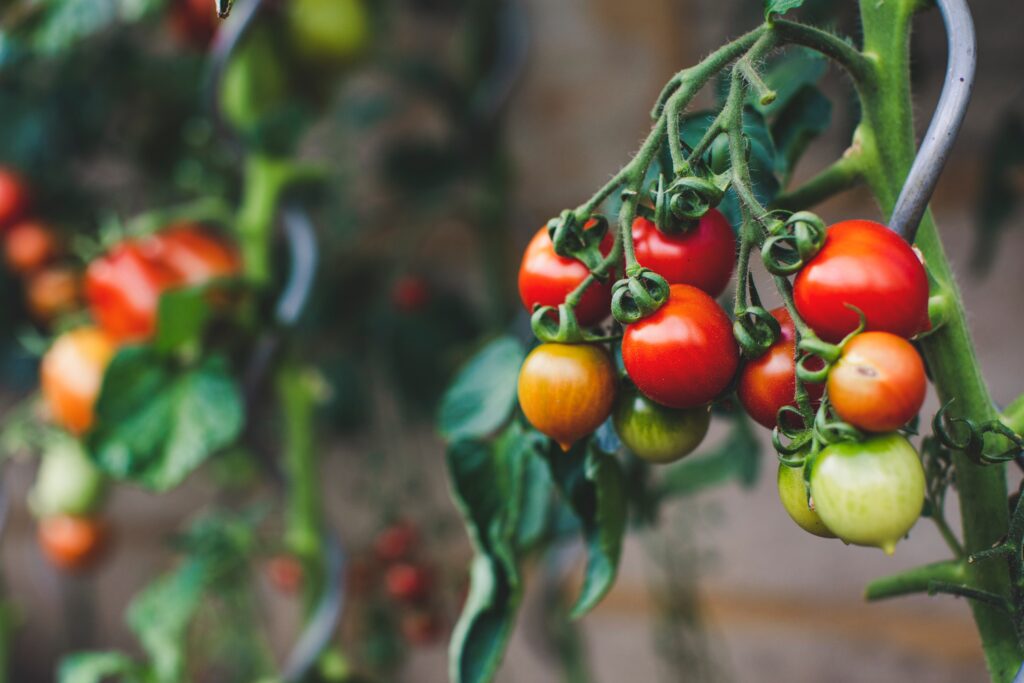
Choosing the right tomato variety for your climate
When it comes to growing tomatoes, choosing the right variety for your specific climate is crucial for a successful harvest. Different tomato varieties have different preferences when it comes to temperature, sunlight, and overall weather conditions. Here are some key factors to consider when selecting the right tomato variety for your climate.
- Temperature: Tomatoes are classified into two main types based on their growth habits: determinate and indeterminate. Determinate varieties, also known as bush tomatoes, tend to have a shorter growing season and are more suitable for cooler climates. Indeterminate varieties, on the other hand, are vining tomatoes that continue to grow and produce fruit throughout the season, making them ideal for warmer climates with longer growing seasons.
- Sunlight: While tomatoes generally require full sun, certain varieties are more tolerant of partial shade or less sunlight. If you have a shady garden or live in an area with limited sun exposure, look for varieties labeled as “part shade tolerant” or “suitable for container gardening” as these tend to thrive in less sunlight.
- Disease Resistance: Different tomato varieties have varying levels of resistance to common diseases such as blight, fusarium wilt, and verticillium wilt. Depending on your climate and the prevalent diseases in your area, selecting disease-resistant varieties can help ensure a healthy and productive tomato garden.
- Taste and Use: Don’t forget to consider your personal taste preferences and how you plan to use your tomatoes. Some varieties are better suited for fresh eating, while others are perfect for canning, sauce-making, or even drying. Experimenting with different flavors and textures can add excitement and diversity to your tomato harvest.
Tips for growing tomatoes in a hot and humid climate
Growing tomatoes in a hot and humid climate can be challenging, but with the right techniques and precautions, you can still have a successful tomato harvest. Here are some tips to help you grow tomatoes in hot and humid climates:
- Choose the right tomato varieties: Opt for heat-tolerant tomato varieties that are known to perform well in hot and humid conditions. Look for varieties labeled as “heat-resistant” or “tolerant to high temperatures.” These varieties are bred to withstand the intense heat and humidity and are more likely to produce a bountiful crop.
- Provide shade: In extremely hot climates, providing some shade for your tomato plants can help protect them from the scorching sun. You can use shade cloth or create a temporary shade structure using bamboo poles and a breathable fabric. This will help reduce stress on the plants and prevent sunburned fruit.
- Water deeply and mulch: Tomatoes in hot climates require consistent moisture to thrive. Water deeply and regularly to keep the soil evenly moist, but avoid overwatering as it can lead to fungal diseases. Mulching around the base of the plants with organic mulch like straw or wood chips can help retain moisture in the soil, prevent weed growth, and regulate soil temperature.
- Provide good airflow: Good air circulation is essential to prevent fungal diseases, especially in humid climates. Prune your tomato plants regularly to remove lower leaves and create airflow around the plants. This will reduce the risk of moisture buildup and fungal infections. Additionally, spacing your tomato plants adequately and providing trellises or cages for support will further enhance airflow and prevent overcrowding.
- Use organic fungicides: In humid climates, tomato plants are more susceptible to fungal diseases such as blight and powdery mildew. To protect your plants, consider using organic fungicides like neem oil or copper sprays. These products can help prevent the spread of diseases and keep your tomato plants healthy.
Best practices for growing tomatoes in a dry climate
Growing tomatoes in a dry climate can be challenging, but with some best practices, you can still achieve a successful harvest. Here are some tips and techniques to help you grow tomatoes in a dry climate:
- Soil preparation: Start by preparing the soil to retain moisture as much as possible. Amend the soil with organic matter like compost or well-rotted manure to improve its water-holding capacity. Adding mulch around the base of the plants can also help conserve moisture by reducing evaporation.
- Water deeply and infrequently: Instead of frequent light watering, opt for deep watering sessions. This encourages the roots to grow deeper, accessing water from lower levels of the soil. Watering deeply also prevents shallow root development, which can make plants more susceptible to drying out. Aim to water your tomatoes thoroughly, about 1-2 inches per week, allowing the top few inches of soil to dry out between waterings.
- Use drip irrigation: Drip irrigation is an efficient way to deliver water directly to the roots of your tomato plants. It minimizes water loss through evaporation and ensures that the water reaches the plants’ root zone, where it is needed the most. Consider installing a drip irrigation system in your garden for more efficient water use.
- Provide shade and wind protection: In dry climates, extreme heat and high winds can quickly dry out tomato plants. To protect them, provide some shade and wind protection. You can use shade cloth or erect temporary structures like umbrellas or fabric covers to shield your plants from intense sunlight and wind.
- Choose drought-tolerant varieties: Opt for tomato varieties that are known to be more drought-tolerant. These varieties are specifically bred to withstand dry conditions and have a better chance of thriving in a dry climate. Look for varieties labeled as “drought-tolerant” or “suitable for arid climates.”
- Monitor soil moisture levels: Regularly monitor the soil moisture levels around your tomato plants. Use a moisture meter or simply dig your finger into the soil to check for moisture content. Adjust your watering schedule accordingly to prevent underwatering or overwatering.
- Protect against evaporation: Minimize water loss through evaporation by using organic mulch, such as straw or wood chips, around the base of your tomato plants. This will help maintain soil moisture levels and reduce the need for frequent watering.
Growing tomatoes in a cold climate: Challenges and solutions
Growing tomatoes in a cold climate can be particularly challenging, as tomatoes are warm-season plants that thrive in temperatures between 70°F and 90°F (21°C and 32°C). However, with the right techniques and precautions, you can still enjoy a successful tomato harvest even in colder regions. Here are some challenges you may face when growing tomatoes in a cold climate, along with their corresponding solutions:
- Frost: One of the main challenges in cold climates is the threat of frost, which can kill or damage tomato plants. To protect your plants, start by planting them after the last frost date in your area. Additionally, consider using season extenders such as row covers, cloches, or cold frames to provide additional insulation and protect your plants from freezing temperatures.
- Short growing season: In cold climates, the growing season for tomatoes may be relatively short. To make the most of the available time, consider starting your tomato plants indoors several weeks before the last frost date. This will give them a head start and allow them to reach maturity before the colder temperatures arrive. You can also choose early-maturing tomato varieties that require less time to produce ripe fruit.
- Temperature fluctuations: Cold climates often experience temperature fluctuations, with sudden drops in temperature even during the summer months. These fluctuations can stress tomato plants and negatively affect fruit set. To mitigate this, consider using season extenders, such as hoop houses or floating row covers, to provide a stable microclimate around your plants. Additionally, watering your plants during hot spells can help regulate soil temperature and prevent heat stress.
- Soil temperature: Tomatoes prefer warm soil temperatures for optimal growth. In cold climates, the soil may take longer to warm up in spring. To expedite soil warming, consider using black plastic mulch or laying down row covers before planting your tomato seedlings. These techniques will help trap heat in the soil and create a warmer environment for your plants.
Tricks for growing tomatoes in an unpredictable climate
Growing tomatoes in an unpredictable climate can present unique challenges, but with a few tricks up your sleeve, you can still achieve success. Here are some tips and techniques to help you navigate the uncertainties of an unpredictable climate and grow healthy tomatoes:
- Start with transplants: When dealing with an unpredictable climate, starting with transplants rather than seeds can give your tomatoes a head start. Transplants are already established plants, which means they have a better chance of withstanding sudden weather changes and getting a jumpstart on growth.
- Use season extenders: Season extenders such as row covers, hoop houses, or cold frames can provide added protection for your tomato plants. These structures can help shield your plants from temperature fluctuations, wind, and sudden changes in weather. By using season extenders, you can create a more stable microclimate for your tomatoes.
- Monitor weather forecasts: Keeping an eye on weather forecasts can help you stay one step ahead of any drastic changes in your climate. If a sudden cold snap or heavy rain is expected, you can take preventative measures, such as covering your plants with blankets or moving them to a more sheltered location.
- Provide consistent watering: In an unpredictable climate, it’s essential to maintain consistent watering practices. Tomatoes prefer evenly moist soil, so monitor the moisture levels and adjust your watering schedule accordingly. During periods of intense heat or drought, you may need to water more frequently to prevent your plants from wilting.
- Choose adaptable tomato varieties: When growing tomatoes in an unpredictable climate, selecting tomato varieties that are known to be adaptable and resilient can make a big difference. Look for varieties that are specifically bred for challenging climates, such as those labeled as “heat-tolerant,” “cold-tolerant,” or “weather-resistant.” These varieties have a better chance of thriving despite unpredictable weather patterns.
- Be prepared to protect your plants: Unpredictable climates can bring unexpected challenges like heavy rainfall, strong winds, or hailstorms. It’s important to have a plan in place to protect your tomato plants when adverse weather strikes. This may include staking your plants for support, using windbreaks, or covering them with plastic or fabric during severe weather events.
Common tomato problems and how to tackle them
Tomatoes, like any plant, can encounter a variety of problems that can hinder their growth and yield. However, with proper care and attention, many of these issues can be prevented or effectively managed. Here are some common tomato problems you may encounter and how to tackle them:
- Blossom end rot: This is a condition characterized by black, leathery patches at the blossom end of the fruit. It is caused by calcium deficiency or irregular watering. To prevent blossom end rot, ensure consistent and adequate watering, avoiding both overwatering and underwatering. Additionally, add calcium-rich amendments to the soil, such as crushed eggshells or bone meal.
- Fusarium and verticillium wilt: These are soil-borne fungal diseases that can cause wilting, yellowing of leaves, and eventual plant death. To prevent these diseases, select tomato varieties that are resistant to these pathogens. Additionally, practice crop rotation, avoiding planting tomatoes in the same spot for consecutive years.
- Early and late blight: These fungal diseases can cause dark, spreading lesions on leaves and fruits. To prevent blight, provide good air circulation by spacing plants properly and pruning lower leaves. Avoid overhead watering, as moisture promotes the spread of the disease. If blight is detected, remove and destroy infected plant material and apply organic fungicides, such as copper sprays or neem oil.
- Tomato hornworms: These large green caterpillars can defoliate tomato plants. Handpick and remove them from plants or use natural methods such as Companion Planting: Planting certain companion plants like marigolds, basil, or borage nearby can help deter hornworms from your tomato plants. These plants can repel or distract hornworms and other pests. Neem Oil: Neem oil is a natural insecticide that can be used to control a variety of pests, including hornworms. Mix a few tablespoons of neem oil with water and spray it on your tomato plants, especially on the undersides of the leaves where hornworms tend to hide. Beneficial Insects: In addition to parasitic wasps, other beneficial insects like ladybugs and lacewings can help control hornworm populations. These predators feed on the eggs and young caterpillars of hornworms.
- Aphids: These small, sap-sucking insects can stunt plant growth and transmit diseases. To control aphids, regularly inspect your plants and remove them by hand or use insecticidal soap or neem oil. Attract beneficial insects like ladybugs and lacewings to help keep aphid populations in check.
Harvesting and storing tomatoes: Do’s and Don’ts
Harvesting and storing tomatoes properly is crucial to ensure you enjoy their full flavor and extend their shelf life. Here are some essential do’s and don’ts:
- Do wait until tomatoes are fully ripe before harvesting for the best flavor.
- Don’t store tomatoes in the refrigerator, as it can diminish their taste and texture.
- Do store ripe tomatoes at room temperature, away from direct sunlight.
- Don’t stack tomatoes on top of each other, as they can bruise and spoil faster.
- Do check your tomatoes regularly and use any overripe ones for cooking or preserving.
We hope you found this article helpful and can’t wait to hear about your progress. Please leave your thoughts below, we’d love to chat! Keep reading our how to series for in depth information on how to plant anything and everything in all types of spaces and places.
